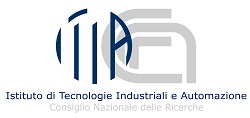MACHAMP: Manipulator Assistive Control for Human Amplification in Mounting Procedures

The application has entered the Solution Award at MECSPE 2018.
It has been developed in cooperation with Kuka Robotics.

The application has entered the Solution Award at MECSPE 2018.
It has been developed in cooperation with Kuka Robotics.
The proposed application optimises man-robot cooperation during execution of heavy-duty industrial applications (such as installation of heavy components). The main goal is therefore to improve operators’ working conditions relieving them from excessive loads and assuring intuitive interaction with the robotic system. Furthermore, the control framework developed increases the flexibility of applications, allowing the manipulator to lift components of unknown dimensions/weights.
The application has been tested for installing an overhead stowage bin in an aerospace industrial scenario.
The proposed application is at the core of the H2020 CleanSky 2 EURECA project, which entails automation of the installation processes of components in the cabin of the new A320. In the proposed scenario the operator is essential to the installation process. The robotic system in fact is responsible for performing all heavy-duty operations, while the person performs high added value tasks , such as supervision, management of activities etc. This application will be installed at Airbus in 2020.
The economic impact of the proposed application is high as it will increase productivity of workers in the aerospace sector by a factor of 2. This framework may be used in all applications that require one or more operators for lifting heavy components (consider that at least two people are required for installing an overhead stowage bin, just to lift the component, while a third person performs assembly).
The proposed framework features high flexibility and a high degree of scalability, as it can be applied to a variety of industrial sectors (automotive, railway, etc.).
The social impact of the proposed application is also very significant. As a matter of fact, the robotic system improves the ergonomics of the task, reducing the operator’s physical stress hence improving safety, quality and productivity. What is more, there are two particularly important factors. On one hand, as the operator’s stress can be reduced by implementing the proposed solution, the operation performed may be reclassified in terms of physical effort required from a person. On the other, the decrease of the physical effort makes it possible to limit/prevent muscular-skeletal accidents. This has significant effects on various aspects – improving workers’ quality of life, reducing replacements due to accidents, decreased health expenditure.